
The old idiom states that ‘silence is golden’, though there are some rooms in the world that truly put that value to the test. Anechoic Chambers are specially designed rooms that are mostly utilised for technology testing, with a few other interesting a noteworthy applications, that are affectionately dubbed as ‘rooms where sound goes to die’. This goes well beyond the typical soundproof bedroom wall, as the noise insulation for these walls seem to smother sound!
But how can a room be created where sound is made obsolete? It sounds like something straight out of the realms of science fiction or quantum physics, and yet across the world, there are such rooms that conduct experiments, research and tests every day. There may be some thinking that these kinds of rooms are the perfect answer to the question of how to reduce noise through walls, but they’d be wise to hold off on instantly installing soundproofing foam and other soundproof technology on this level.
So what creates these soundproofed rooms so effectively? Is it ingenious engineering? Incredible tech? Black magic? Below are answers to this question (spoiler: it’s not that last answer) as well as several other questions you may have about them. All of the following explores the wonderful world of sound engineering in a way that, on paper, sounds like an impossible feat.
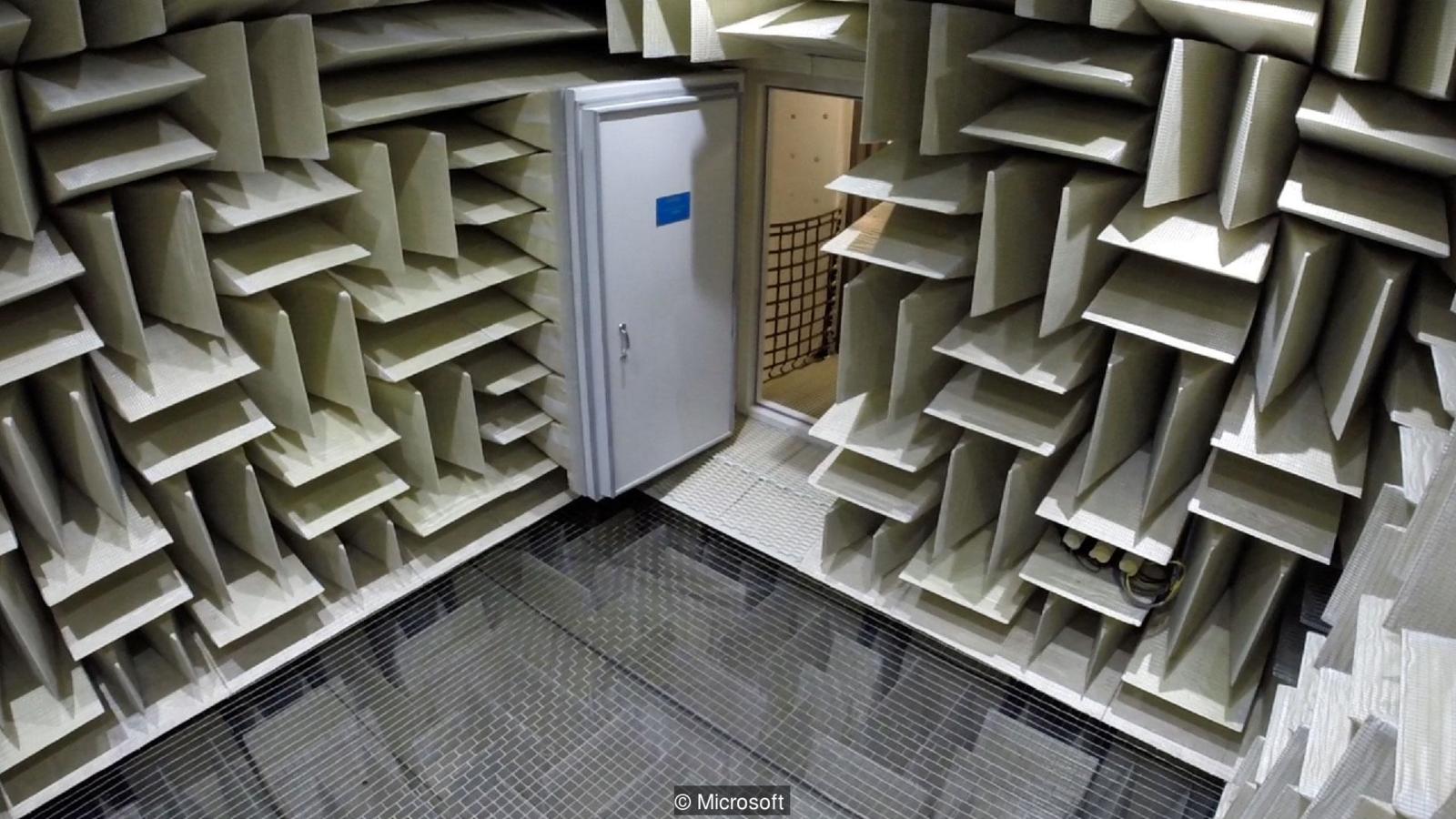
The Guinness World Records had previously stated that the anechoic chamber within Orfield Laboratories in South Minnesota was the quietest room in the world, registering at a baffling -9.4 decibels, yet as of 2015 this way no longer the case. Usurped by Microsoft’s Building 87, this Washington based building is host to an anechoic chamber used to develop new equipment and technology.
This is no DIY soundproofing; this anechoic chamber is formed by using ridiculously intelligent engineering. Microsoft’s quiet room managed to smash the previously held world record, with background noise being recorded at an almost impossible-to-comprehend -20.6. To put this into some form of understandable reference, the average background noise of a bedroom at night is around 30 decibels, the Orfield Laboratories’ anechoic chamber was quiet enough to hear your own heartbeat after half an hour, and Microsoft’s quiet room was too silent that you could hear your own bones grinding together as soon as you set foot in it.
Even crazier is that the sound of air molecules colliding with each other, known as the Brownian Motion, is estimated to be at about -23 decibels; that’s only 2.4 decibels less than Microsoft’s quiet room’s background noise. As far as removing office noise goes, this office is so far removed from noise that the team often say that opening the door and going back into the main building feels like being hit by a ‘waterfall of sound’!
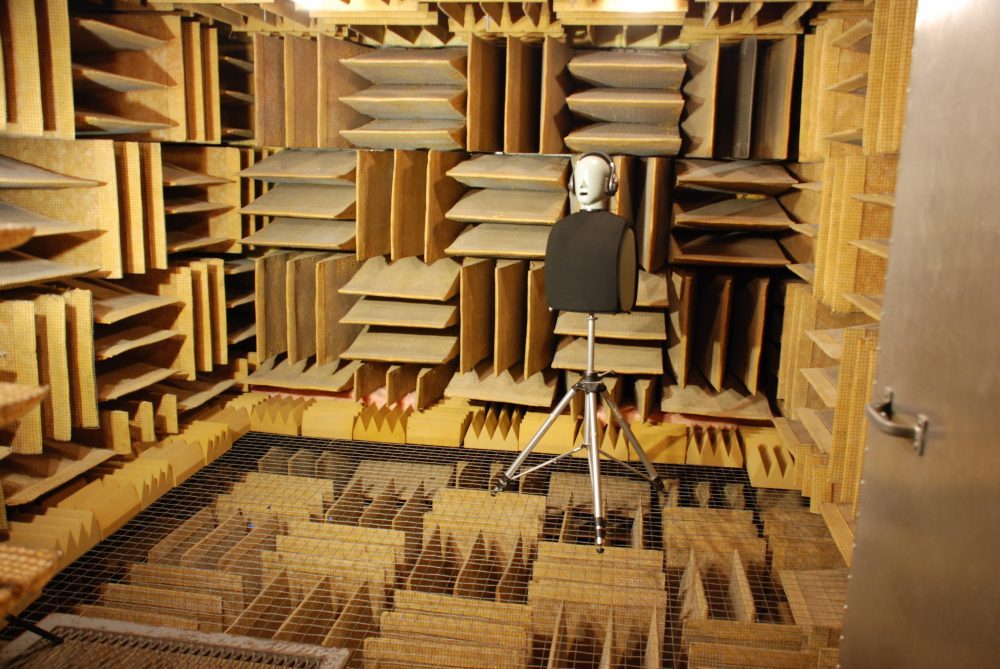
LaSalle Munroe, Director of Electrical Engineering at Microsoft, makes use of Microsoft’s quiet room with his team testing new electronics and technology, with the utter, dead silence helping them look for the likes of tiny vibrations produced by capacitors on electric circuit boards. These vibrations are what many would register as ‘irritating hums’, and so Munroe and his team set out to fix these identified issues.
They also test out the likes of keyboards, trying to determine which materials look and feel best for the keyboard themselves as well as which spring mechanisms mix with these materials to create the most pleasant sounds. Another clear answer for how to effectively utilise anechoic chambers is also the testing of sound systems and speakers.
Coincidentally there are alternative uses for the anechoic chamber that may surprise some. Steve Orfield, Director & Owner of Orfield Laboratories, has been researching how the prospect of utter silence can serve as a therapeutic experience for people with conditions such as PTSD (post-traumatic stress disorder) and even autism. Certainly, a worthy cause that most wouldn’t assume soundproofing could help with!
In his own words, “It’s a fascinating experience; gentle introverts will find it much more pleasurable than an extrovert.” Orfield is suggesting that those more capable of self-reflection and internally thinking may find the idea of “finding themselves as the noise” interesting, whereas some think that the experience of being in such silence that hearing their own heartbeat might be too scary.
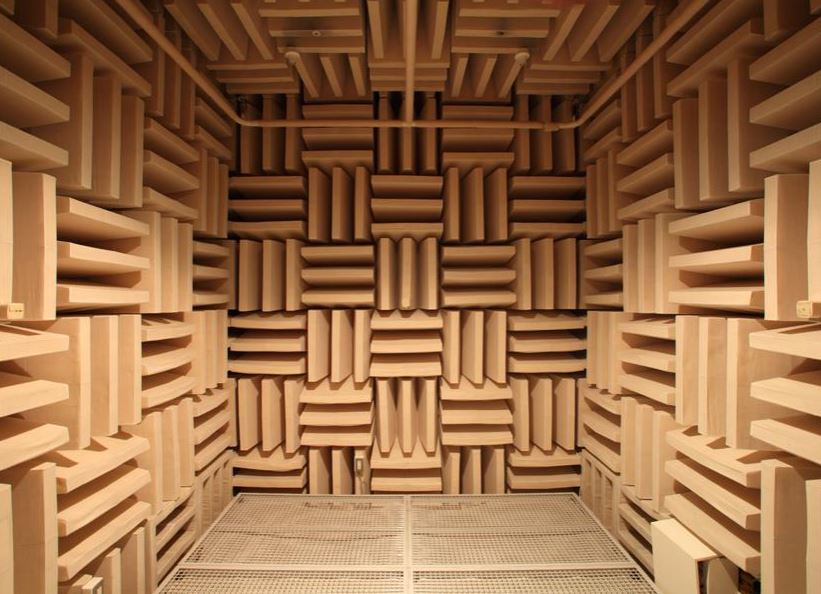
Explaining how an anechoic chamber works is difficult without treading into the realms of degree level music studies, but essentially the padded, triangular fall fittings trap the reflections of sound waves, which then dissipate via the air’s molecular viscosity. Simply put, the energy in sound waves that allow them to travel through the air and into our ears is dulled considerably or quashed completed by the specially designed walls.
Alternatively, there are RF anechoic chambers, those designed to hamper or eliminate radiofrequency. These adhere to a similar design as acoustic and semi-anechoic chambers, though the interior is padded with RAM, radiation-absorbent material. Like the standard types of anechoic chambers, RF anechoic chambers can vary in size depending on their purpose, with some being large enough to comfortably host fighter jets.
While the design for anechoic chambers is roughly the same, it’s the special features that set each one apart from the other. Microsoft’s Building 87, for example, was designed with the anechoic chamber being surrounded by six separate layers of concrete, each 12 inches thick, and rests on a ‘foundation’ of 68 vibration damping springs, which are in turn resting on a separate foundation slab. Most soundproofed rooms, such as when soundproofing a room to transform it into a music studio, merely settle for utilising soundproofing foam, acoustic panels and SBx boards, so to go through the lengths of building a ‘concrete onion’ is no small feat. In fact, Munroe says that deciding where they could build this building, and consequently the anechoic chamber, was a particularly arduous task as they had to find somewhere naturally quiet to begin with.
Hundraj Gopal, Principle Human Factors Engineer at Microsoft (and the man who spearheaded building their anechoic chamber), joked that “The chamber doesn’t make direct contact with building around it at point,” and stated that the insulation of the chamber ‘makes a huge difference’, going so far as to claim that even if a jet engine was taking off just outside the building then barely the sound of a whisper would penetrate the chamber itself.
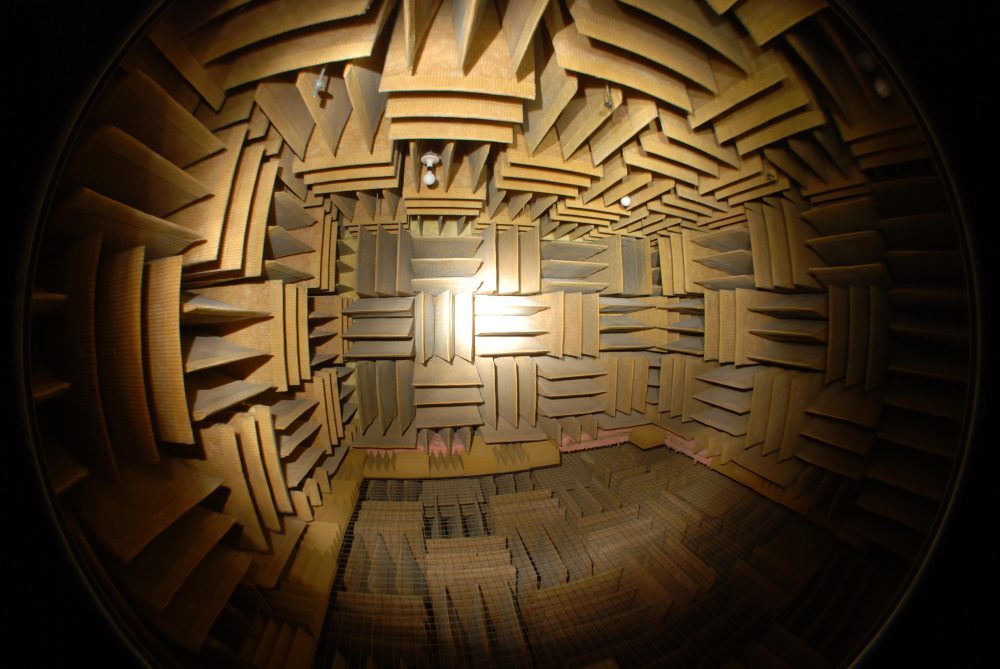
There isn’t just one anechoic chamber, but most people will probably think of the Orfield Laboratory as the anechoic chamber as it was previously the Guinness World Record holder for the ‘quietest room in the world’ and received a lot of publicity from the likes of the BBC and NBC. The full list of anechoic chambers is elusive though as some facilities, such as universities, don’t exactly advertise them to the world.
A good list of those that can be rented includes the aforementioned Orfield Laboratories in Minneapolis, the Faculty of Brain Science at UCL in London, the Acoustics Lab at the University of Salford in Manchester, the Faculty of Humanity and Theology at Lund University in Lund, the NTT InterCommunication Centre (ICC) in Tokyo, the EMC RF Anechoic Test Facility in Sydney and the current World Record holder of Microsoft’s Building 87 in Washington. Each and every one of these facilities has gone above and beyond to ensure that the art of soundproofing is pushed to its limits; so much so that most of the time only the most important of academic purposes can be used to justify these incredible rooms.
These facilities do state that they can be rented, though mostly for academic purposes. The most accessible facility is the Orfield Laboratories, which opens the anechoic chamber as well as Sound 80 Studios, known as “the world’s first digital recording studio”, to small groups of tourists throughout the year.
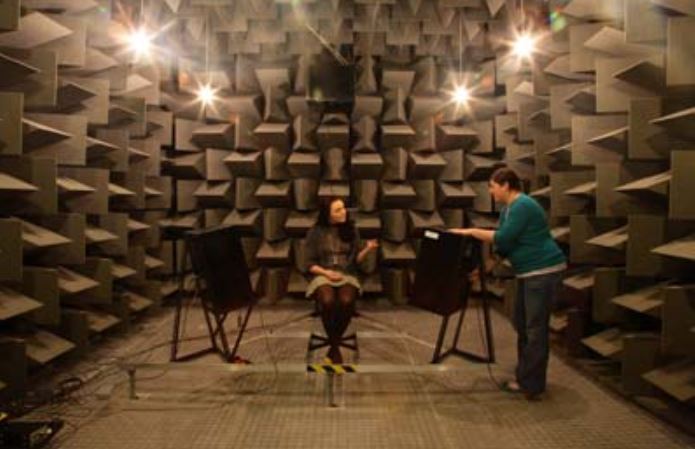
As most of the anechoic chambers around the world are based within company headquarters or universities it’s generally stated that, no, the general public can’t visit them. However, this isn’t the case with the Guinness World Records’ old holder; the anechoic chamber at Orfield Laboratories. Reportedly still accepting tours, Orfield Laboratories will showcase their acoustic marvel to the general public, with tours ranging from two to ten people at around $125 per person.
Of course, there’s always the option of enrolling at one of the universities that have their own anechoic chambers if you really want to experience or use them. Some universities offer exceptional sound engineering courses that make good use of anechoic chambers, such as the University of Salford, so those that are genuinely intrigued in these phenomenal rooms could certainly satisfy their curiosity whilst improving their higher education.
As for the rest of us, we’ll simply have to view anechoic chambers as enigmatic mysteries, those that we’ll never encounter or unravel. Then again, after hearing reports of the deathly silence instilling dread and fear in those that venture into these chambers, perhaps it’s best that they remain a mystery.
What are your thoughts about anechoic chambers? Would you want to experience the utter silence within their walls? How long do you think you could last before having to get back into the noisy outside world? And could you imagine having soundproofing this potent in your home or office? Let us know in the comments section below and be sure to check out the rest of our articles here on our blog!